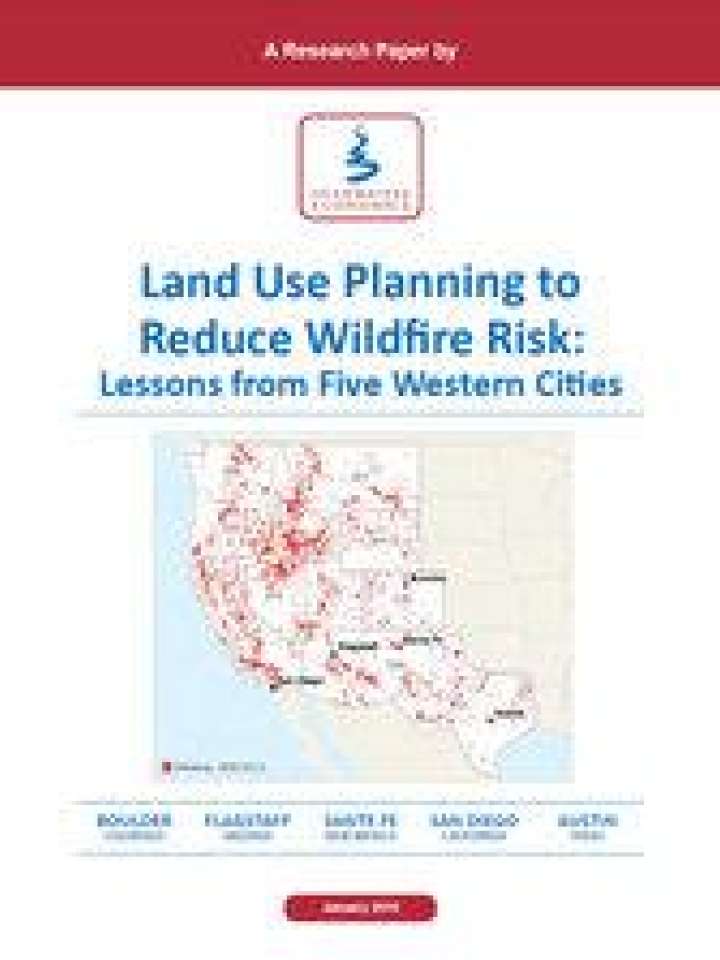Land use planning to reduce wildfire risk: lessons from five western cities
Wildfires across the American West are increasing in frequency, size, and severity. The impacts from climate change, coupled with ongoing development within the wildland-urban interface (WUI), further exacerbate the risks from wildfires. In response, some urban areas in the West are addressing the growing threat of wildfires using innovative land use planning tools.
This report profiles how five cities and counties in the region -including Austin, Texas, Boulder, Colorado, Flagstaff, Arizona, San Diego, California, and Santa Fe, New Mexico- are adapting to the increasing risks of wildfires through improved land use planning. While each case study demonstrates a unique approach toward wildfire mitigation, together they represent a suite of innovative land use planning strategies that can be selectively applied elsewhere.
Examples of wildfire risk reduction measures described in the full report demonstrate a community’s collaborative potential when local residents, city leaders, and land agencies combine resources to collectively manage wildfire risk. It is hoped this report provides a learning document for cities and towns across the western part of the US to see how other communities in the region are using land use planning to reduce wildfire risk.
This report provides useful insight for planners and elected officials, firefighters, federal land managers and Members of Congress who can play a significant role in helping communities become better adapted to wildfire risk.
Explore further
